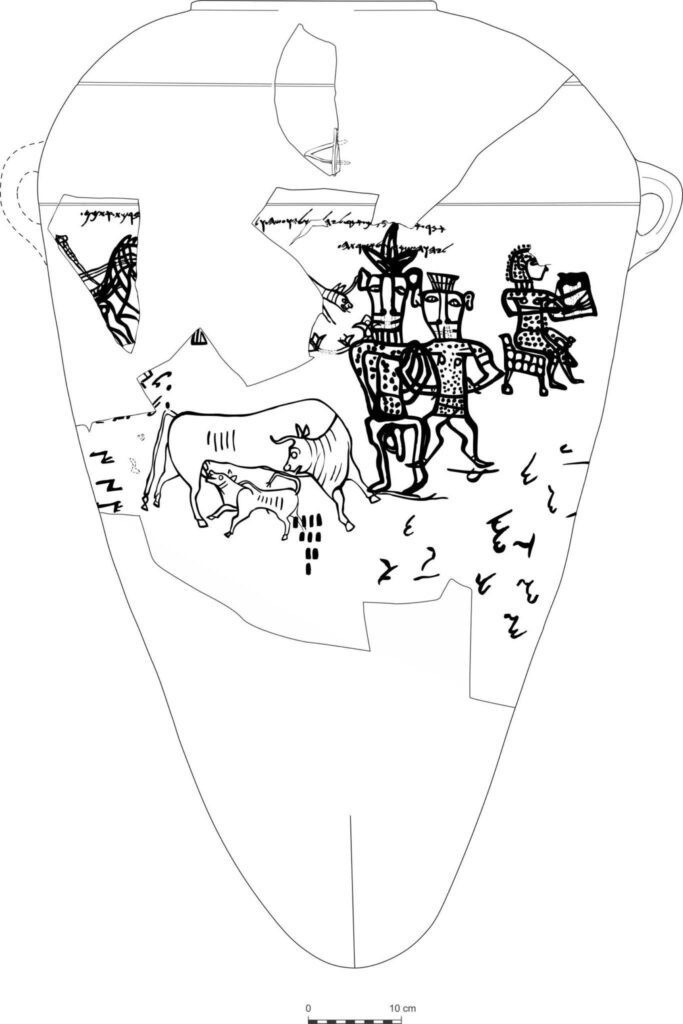Location
Nestled amidst the arid landscape of the Sinai Peninsula, Kuntillet Ajrud, Arabic for “Solitary Hill of Wells,” whispers tales of a bygone era. This archaeological site, overlooking the Wadi Quraiya valley, served as a vital stopover on ancient trade routes connecting the Gulf of Aqaba and the Mediterranean. Its history, however, stretches far beyond mere commerce, revealing intriguing layers of religious practices and cultural interactions.
History
Flourishing during the late 9th/early 8th centuries BCE, Kuntillet Ajrud stood as a fortified shrine or outpost, likely linked to the Israel kingdom. Yet, the precise function and religious leanings of the site remain a subject of scholarly debate.
Excavations
The site was excavated in the 1970s by Ze’ev Meshel., The most significant finds from Kuntillet Ajrud are a number of ostraca (inscribed pottery sherds) that contain religious texts. These texts are written in Hebrew and Aramaic, and they provide information about the religious beliefs of the people who lived at Kuntillet Ajrud.
Findings
The finds from Kuntillet Ajrud have challenged some of our assumptions about the early development of Judaism. The evidence suggests that the Israelites worshipped a number of gods and goddesses, including Yahweh and Asherah. This evidence also suggests that the Israelites were influenced by the religious beliefs of the surrounding cultures.

One of the most important texts from Kuntillet Ajrud is a blessing that mentions the names of Yahweh and Asherah. This text is significant because it is the first time that the name Asherah is mentioned in a biblical text. The text also suggests that Yahweh and Asherah were worshipped together as a divine couple.


